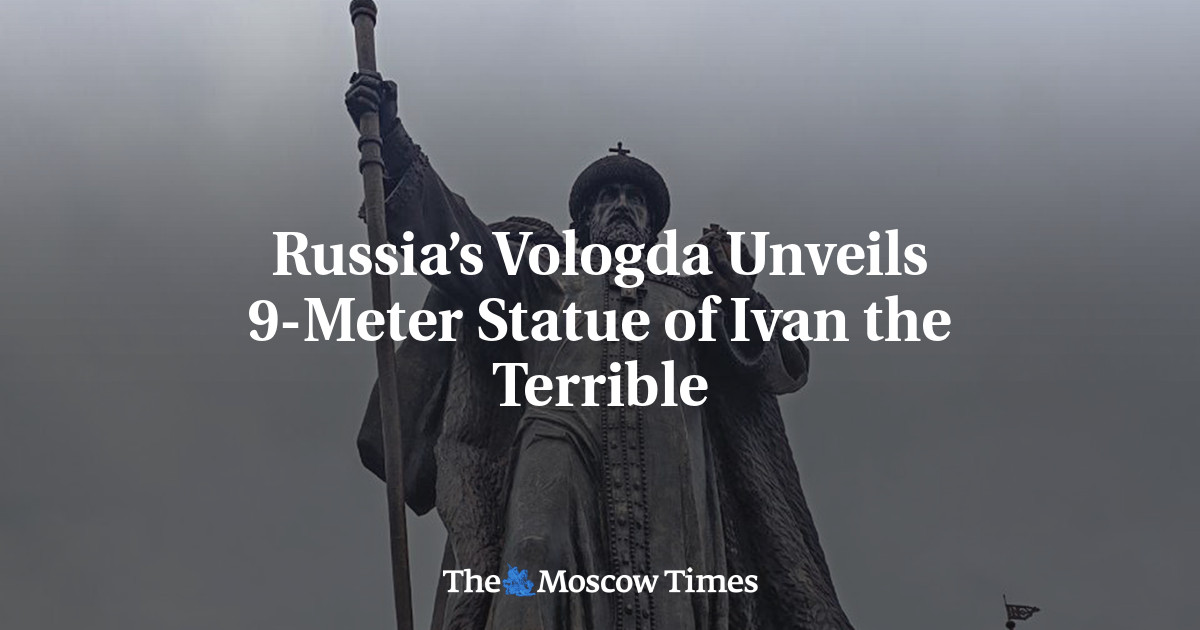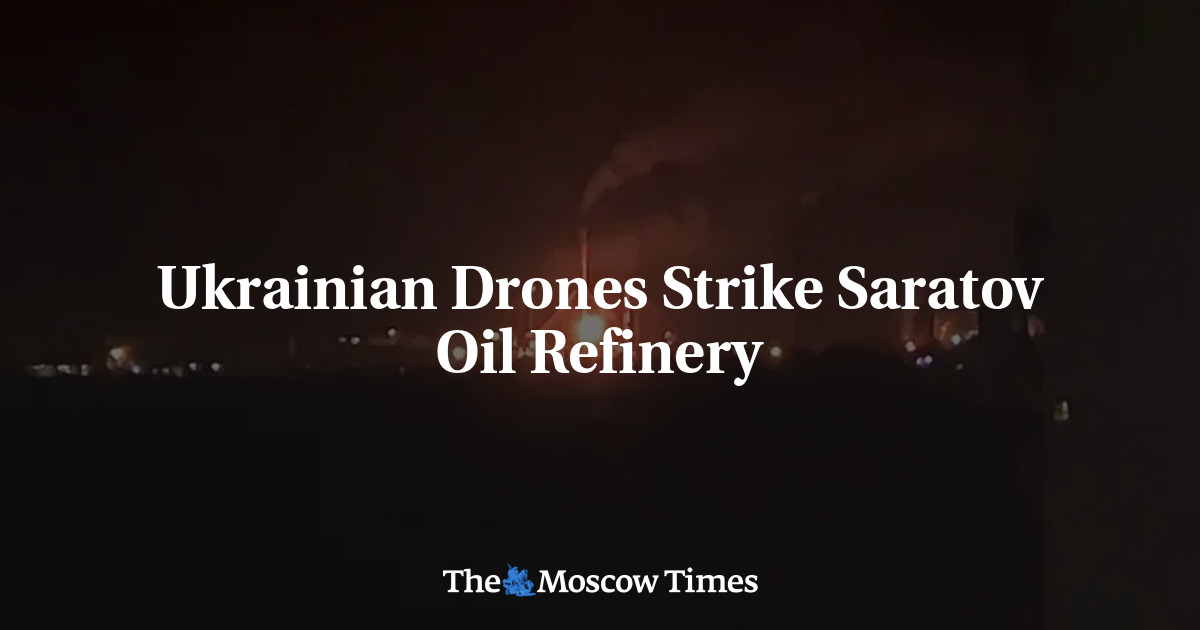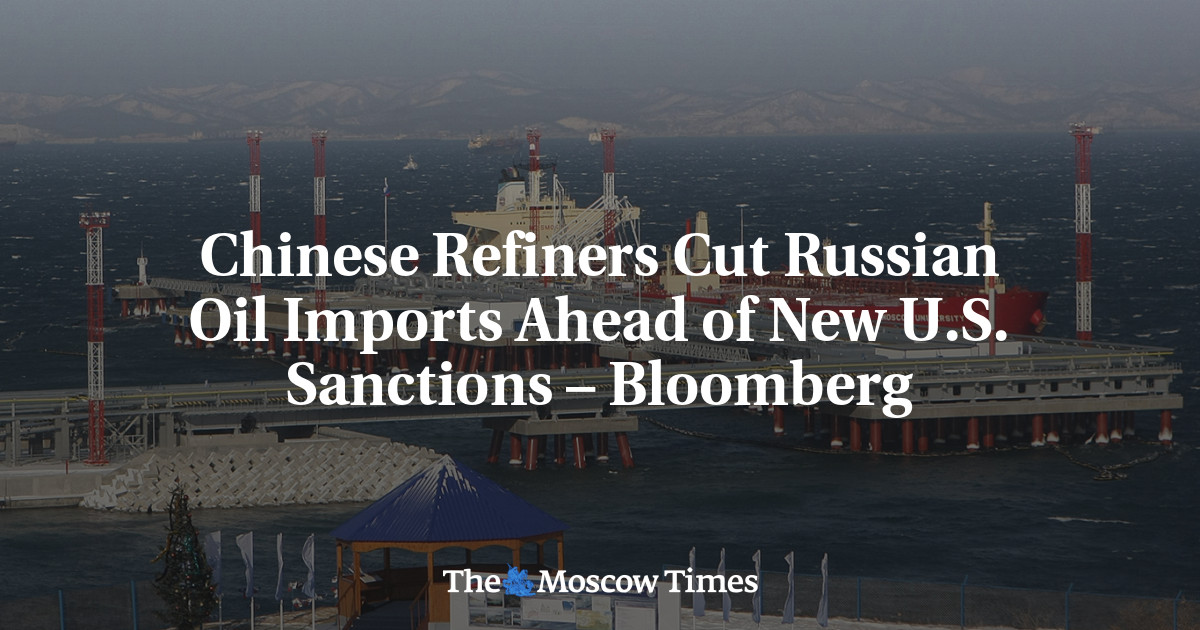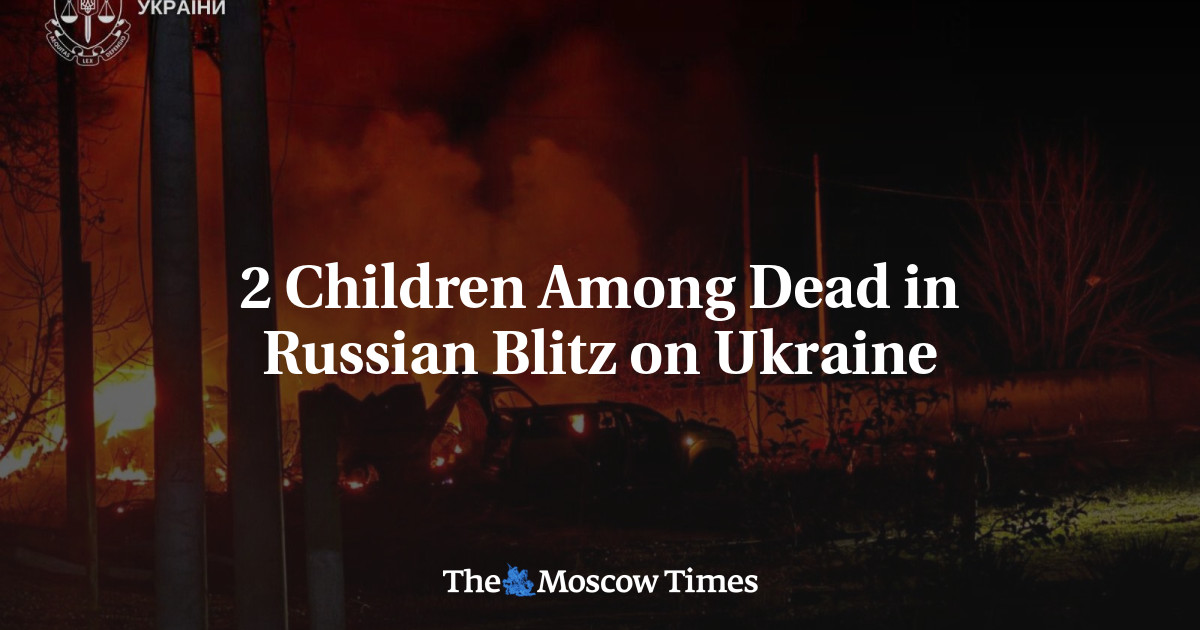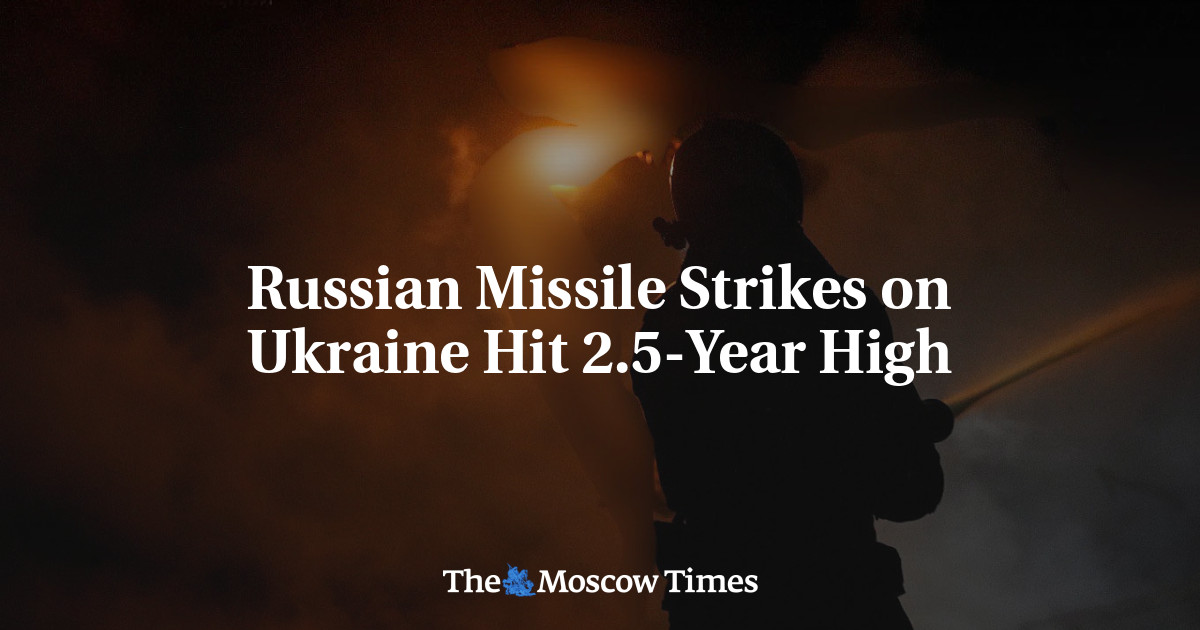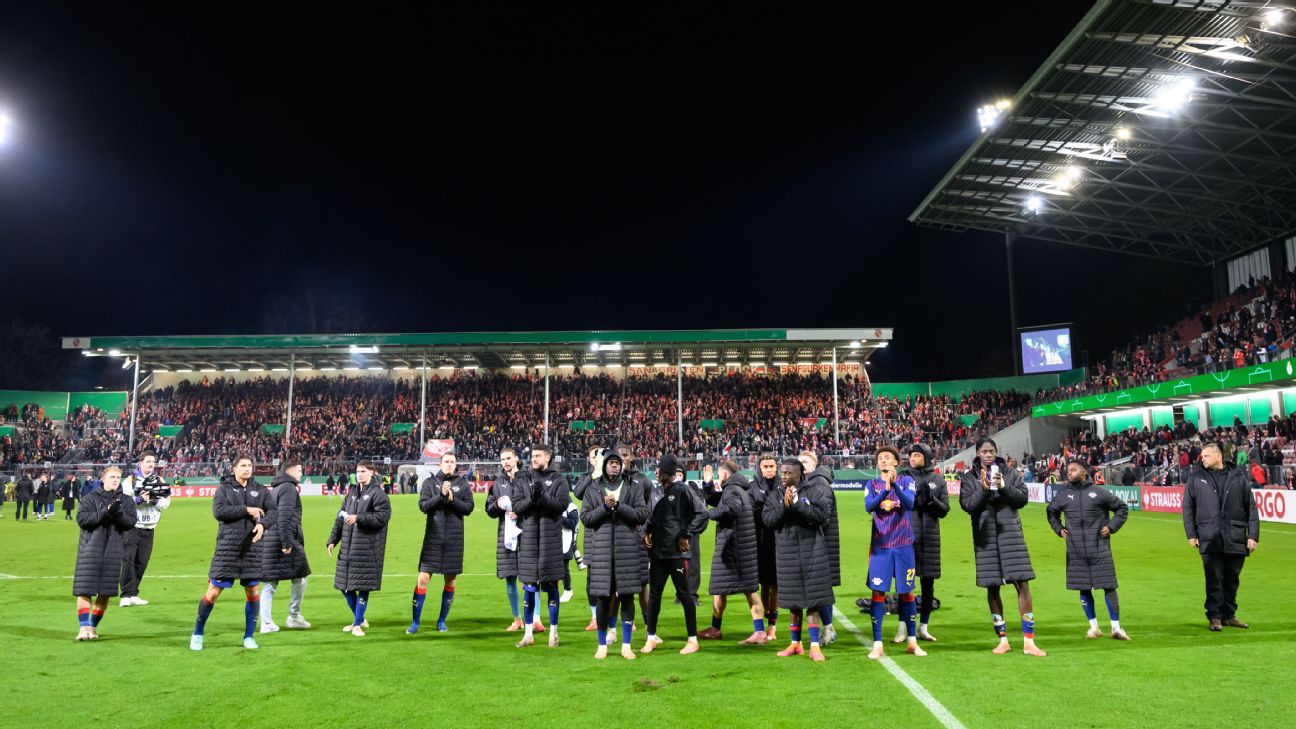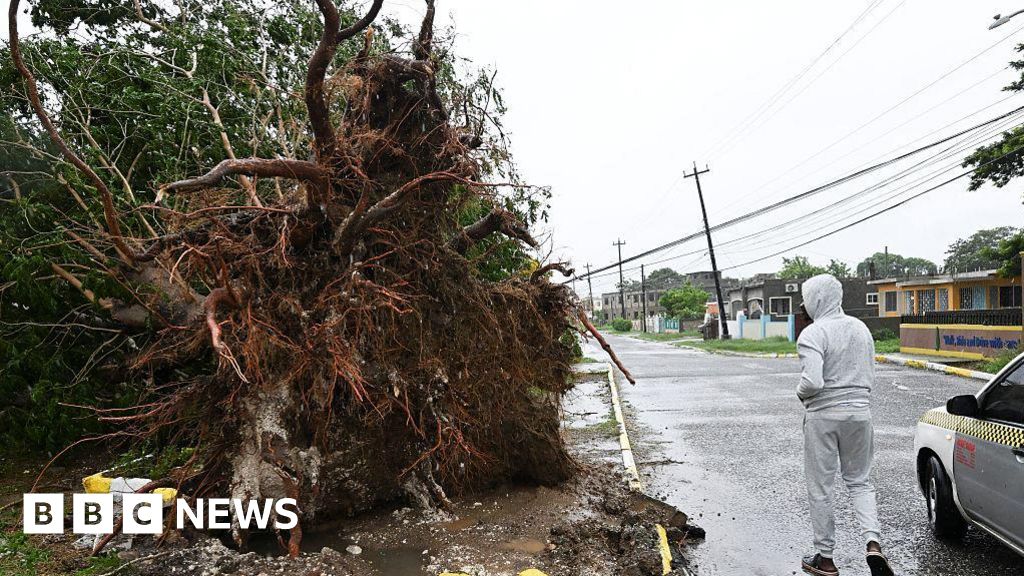Russia’s carmakers are facing mounting problems as falling sales and deteriorating finances put the industry under strain.
AvtoVAZ, the country’s largest automaker, has shifted to a four-day workweek amid weak demand caused by expensive car loans and a growing stock of unsold vehicles. The company has cut its production target from 500,000 vehicles to about 300,000, with sales of its flagship Lada models expected to fall by as much as 25% this year.
The governor of the Samara region, home to AvtoVAZ’s main plant, has appealed for state support. In his plea, Governor Vyacheslav Fyodorishchev highlighted AvtoVAZ’s role as a major employer, with 40,000 workers at the plant and another 15,000 in affiliated industries, but cautioned that workloads are on the decline.
Motor vehicle and trailer manufacturing was among the sectors hit hardest in the first eight months of 2025, with output down 19.9% year on year, according to the Economic Development Ministry. That follows an 18.2% increase in 2024, a recovery year for the industry.
From foreign investment to isolation
Before Russia’s 2022 invasion of Ukraine, the country’s automotive strategy centered on attracting foreign automakers and gradually localizing production to boost domestic value-added output.
“The strategy since the 2000s was to keep Russian plants running by gradually adapting European technologies and templates at the expense of domestic R&D,” a business analyst involved in auto industry projects before 2022 told The Moscow Times.
“This was seen as a middle ground between importing finished vehicles from the West and committing the time and money needed for full-scale local production — an investment that would only make sense in a much larger domestic market,” he said, speaking on condition of anonymity.
Foreign investment poured in during the industry’s boom years in the late 2000s, with sales peaking at nearly 3 million vehicles in 2012 and remaining around 2.5 million in 2013-2014. Some automakers, including South Korea’s Hyundai, built factories from scratch, while Renault-Nissan bought a majority stake in AvtoVAZ.
By 2020, Russia had around 15 investment partnerships with global carmakers, including Chinese automaker Haval. The government offered tax breaks and other incentives in exchange for capital commitments and increased localization, including the local production of components such as engines.
That model collapsed after Western companies exited Russia in 2022, forcing Moscow to depend on Chinese imports and hastily repurposed facilities. The share of vehicles produced abroad jumped from 18% in 2021 to 60% in 2024, and was dominated by Chinese brands.
Vehicle production fell from 1.5 million units in 2021 to 600,000 in 2022, before partially recovering to 756,000 in 2024.
While the sector survived, its future remains uncertain.
Retooling abandoned Western plants is costly, and Chinese automakers have been reluctant to localize production. Only a few Chinese brands have established assembly operations in Russia, most notably Haval.
The Moskvich-3, assembled near Moscow, is based on a Chinese JAC model and follows the CKD (completely knocked down) method, with most parts imported and assembled locally.
Negotiations with JAC are ongoing to switch to the SKD (semi-knocked down) method, which involves assembling large pre-made modules and leaves only 5-10% of a car’s value in Russia.
“It’s a deadlock,” the business analyst said. “Building cars entirely in Russia is still prohibitively expensive and technically unfeasible, while Chinese manufacturers would rather dump prices than invest in local production — especially since a basic AvtoVAZ without subsidies may cost roughly the same as some solid Chinese models.”
Sanctions and weak domestic demand are also deterring Chinese manufacturers from committing to Russia, he said.
Even Lada, Russia’s top-selling brand, remains a hard sell.
“Most of our sales depend on government subsidies,” a Lada dealership salesman said. “Without them, customers usually prefer Chinese models.”
By 2024, Chinese brands accounted for 84.5% of all imported new cars and roughly 60% of total new car sales in Russia.
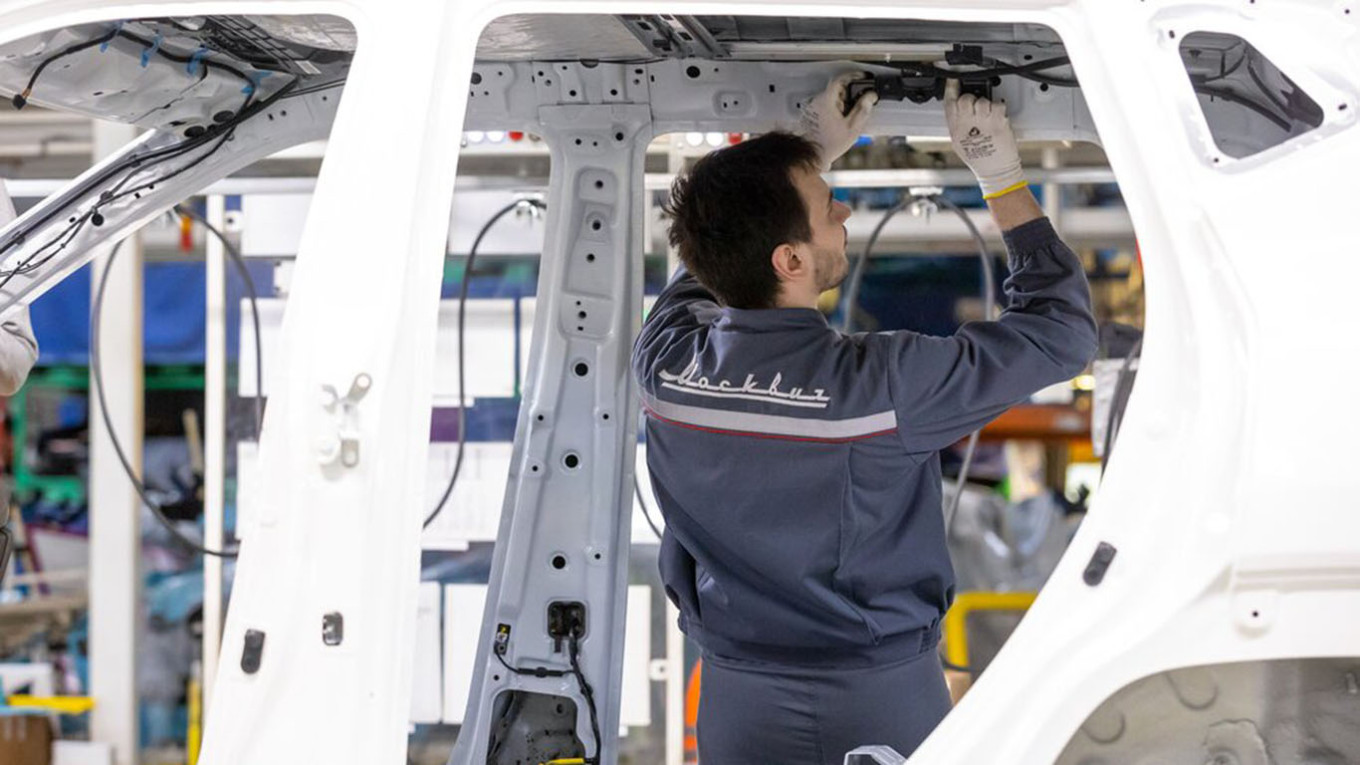 Manufacture of Moskvitch cars.
Moskva News Agency
Manufacture of Moskvitch cars.
Moskva News Agency
Weak demand and soaring prices
Subdued consumer demand continues to hold back domestic producers and deter Chinese localization. Rising prices and doubts about quality have discouraged Russians from buying new vehicles.
The average car price jumped nearly 50% between 2021 and 2023, from 1.99 million rubles ($24,650) to 2.96 million rubles ($36,670), while the average vehicle age increased to 15.5 years in early 2025, up from 13.9 years in 2021. Seven in 10 cars on Russian roads are now more than a decade old.
High interest rates and tighter lending rules are further dampening demand.
Up to 85% of Lada Vesta sales rely on car loans, yet the total value of car loans issued between January and September reached only 1.03 trillion rubles ($12.8 billion) — down 45.5% from the same period in 2024, according to the National Credit History Bureau (NBKI).
In the first half of 2025, Russian car production slipped just 2.6% to 326,000 units, but sales plunged 26% to 530,375. Full-year demand is projected at around 1.3 million vehicles — a 17% drop from 2024.
Nor can Russian carmakers hope to offset the domestic slump with export growth.
AvtoVAZ shipped 6,500 Ladas abroad in 2023 and about 21,000 in 2024, down from 35,800 in 2021.
Sales to Kazakhstan fell from 9,359 in 2021 to just 1,085 in 2024 as buyers shifted toward Chinese and Western brands. In Uzbekistan, where Chevrolet dominates the market, Lada no longer ranks among the top 10 brands.
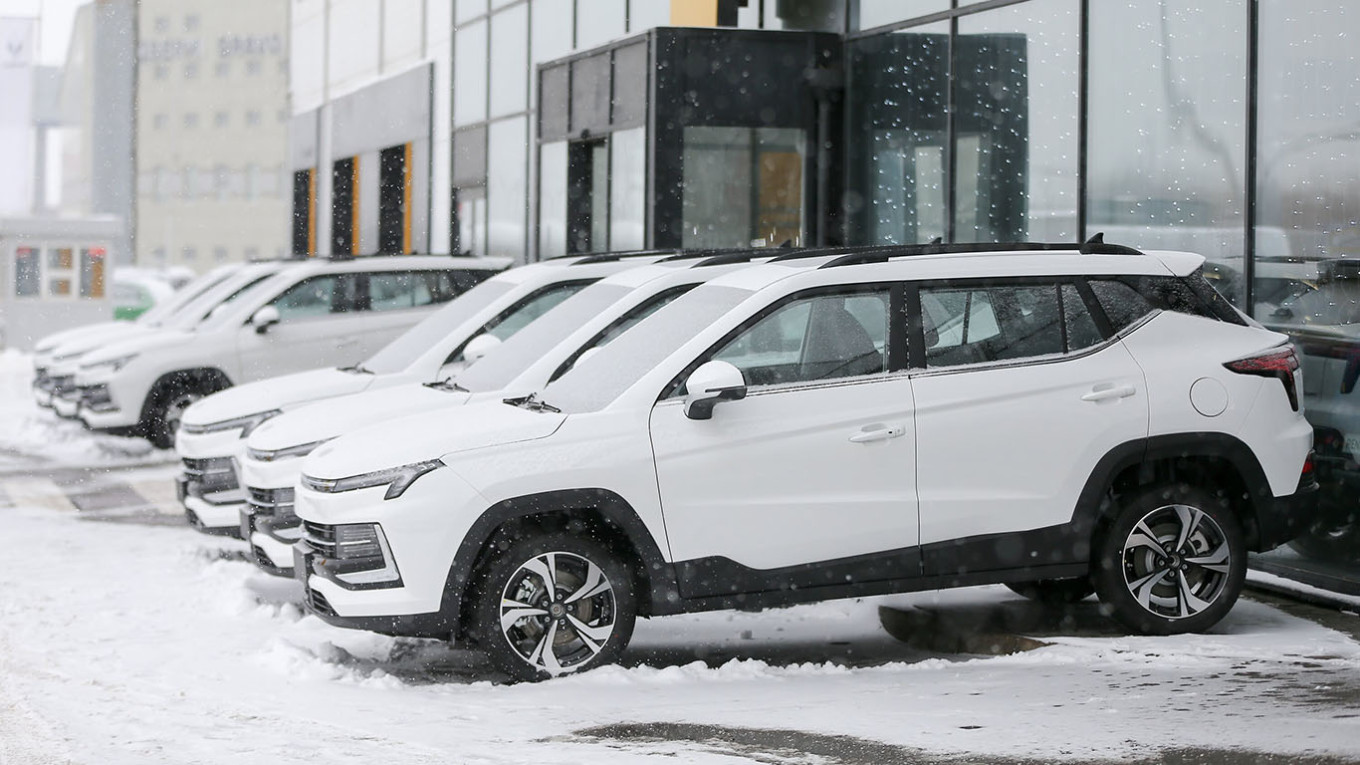 Moskvich cars at the dealership.
Sergei Vedyashkin / Moskva News Agency
Moskvich cars at the dealership.
Sergei Vedyashkin / Moskva News Agency
What to expect next?
The government has rolled out measures extending beyond direct financial support for carmakers in hopes of stimulating domestic auto sales and encouraging localization.
The initiatives aim to give Russian-made vehicles a price edge over Chinese imports while incentivizing Chinese automakers to assemble locally.
Subsidized discounts of up to 25% on domestically produced cars are funded through 2026 at a cost of 113 billion rubles ($1.4 billion). These discounts also applied to locally assembled foreign cars such as the Haval Jolion until its price exceeded the 2-million-ruble ($24,780) eligibility cap.
Moscow has also raised import duties and the so-called vehicle recycling fee, which is charged when a car is imported or registered.
Chinese cars with 1-2-liter engines now face roughly $7,400 in recycling fees plus a 15% import duty. The fees will gradually increase, with discounts for locally produced cars.
From 2026, stricter localization rules will apply to taxi fleets across most regions, and from 2033, only locally produced or contracted models will be allowed to operate.
These rules can be adjusted to reflect market conditions and investor concerns. Authorities eased some requirements in August, lowering the localization threshold for recycling fee compensation from 3,701 to 1,500 points to encourage Chinese investment, the Vedomosti business daily reported.
Higher import costs may push some large Chinese automakers to follow Haval’s example and begin local assembly, the business analyst said.
Haval produced 100,000 vehicles in Russia in 2023 and plans to double that after upgrading its plant this year, while Moskvich targets just 50,000 units.
While Russia remains an important market, only gradual localization is likely — contingent on government subsidies — since the market is too small to support all Chinese brands and justify their large-scale investment, especially in light of the threat of new Western sanctions.
And with Russia dependent on Chinese vehicles and spare parts, Beijing’s automakers are likely to delay localization and use their leverage to negotiate better terms.
“Full-scale localization is off the table for now,” the analyst said. “Setting up engine production for passenger cars makes no sense unless you’re producing at least 300,000-500,000 units.”
A Message from The Moscow Times:
Dear readers,
We are facing unprecedented challenges. Russia's Prosecutor General's Office has designated The Moscow Times as an "undesirable" organization, criminalizing our work and putting our staff at risk of prosecution. This follows our earlier unjust labeling as a "foreign agent."
These actions are direct attempts to silence independent journalism in Russia. The authorities claim our work "discredits the decisions of the Russian leadership." We see things differently: we strive to provide accurate, unbiased reporting on Russia.
We, the journalists of The Moscow Times, refuse to be silenced. But to continue our work, we need your help.
Your support, no matter how small, makes a world of difference. If you can, please support us monthly starting from just $2. It's quick to set up, and every contribution makes a significant impact.
By supporting The Moscow Times, you're defending open, independent journalism in the face of repression. Thank you for standing with us.
Continue
![]()
Not ready to support today?
Remind me later.
 (1).png)
 18 hours ago
4
18 hours ago
4


